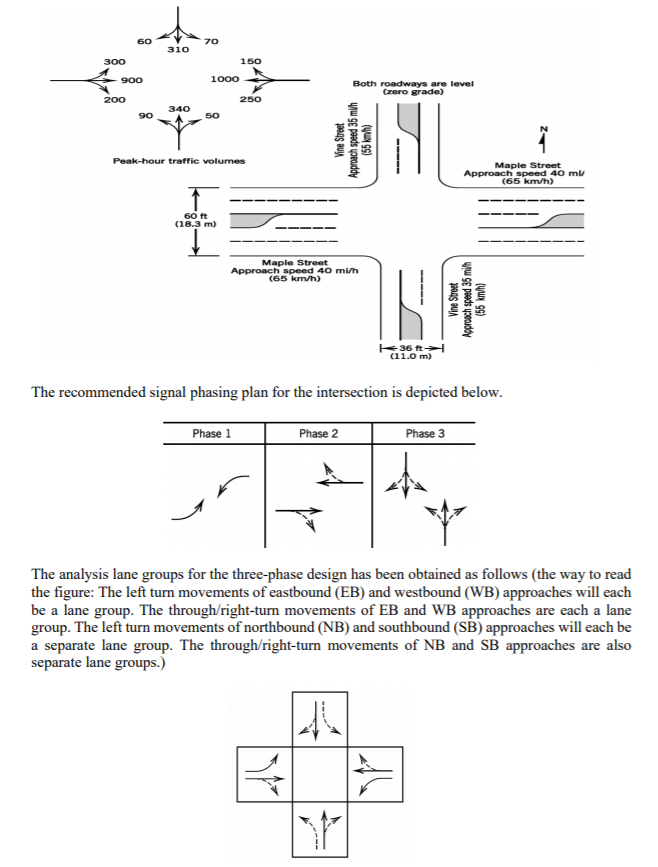2. Determine the level of service (LOS) for the eastbound approach of Maple Street (shown below) ...


2. Determine the level of service (LOS) for the eastbound approach of Maple Street (shown below) assuming no initial queue at the start of the analysis period. Hint: Recall from the lecture slides that each “intersection” has multiple “approaches,” and each approach may have multiple “lane groups.” For each lane group, its LOS can be determined by calculating its service measure (according to the HCM formula presented in the lecture slides) and comparing it with the threshold values of the HCM table below. For each approach, its LOS can be determined by aggregating (i.e., weighted average) the service measures of all of the lane groups that belong to the approach using the following equation and comparing it with the threshold values from the HCM table below. An analogous aggregation is needed if you want to determine the LOS of the whole intersection. di da = Ldivi, where da is the average delay per vehicle for approach A (in seconds), d; is the average delay per vehicle for lane group i (in seconds), and vị is the analysis flow rate for lane group i (in veh/h). di EA DAVA where d, is the average delay per vehicle for intersection 1 (in seconds) and VA is the dA analysis flow rate for approach A (in veh/h). LOS criteria for signalized intersections according to HCM) LOS Control delay per vehicle (sec/veh) A < 10 B > 10-20 С > 20-35 D > 35-55 E > 55-80 F > 80 The intersection and the peak hour volumes (in veh/h) are shown below.
60 70 310 150 300 900 1000 Both roadways are level (zero grade) 200 250 90 340 50 Vine Street Approach speed 35 mlh (55 kmh) Peak-hour traffic volumes Maple Street Approach speed 40 ml (65 km/h) 60 ft (18.3 m) Maple Street Approach speed 40 min (65 km/h) Vine Street ww ge peeds upeodoy (55 kmh) (11.0 m) The recommended signal phasing plan for the intersection is depicted below. Phase 1 Phase 2 Phase 3 The analysis lane groups for the three-phase design has been obtained as follows the way to read the figure: The left turn movements of eastbound (EB) and westbound (WB) approaches will each be a lane group. The through/right-turn movements of EB and WB approaches are each a lane group. The left turn movements of northbound (NB) and southbound (SB) approaches will each be a separate lane group. The through/right-turn movements of NB and SB approaches are also separate lane groups.) 4
Solved
Civil Engineering
1 Answer
Aduri Knox

Login to view answer.